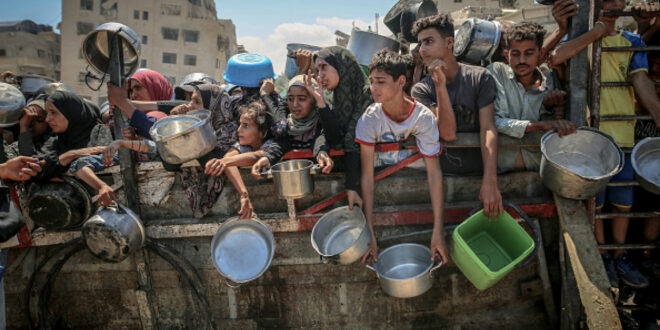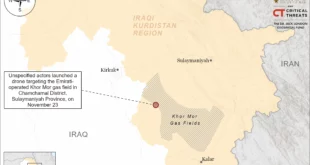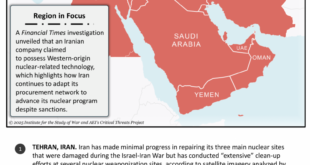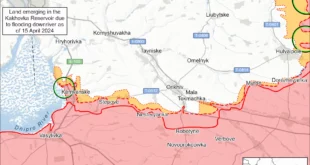As the starvation of Gaza gains increasing global attention, Israel has rushed to explain it away as an “unfortunate byproduct of war” or a “logistical failure”, rather than a well-documented deliberate policy of weaponising hunger.
Israel’s instrumentalisation of food and water, however, did not start on 8 October 2023, when then-Defence Minister Yoav Gallant declared that “no food, no water, no electricity, no fuel” would enter Gaza.
Rather, this tactic has been consistently used as a matter of state policy since Israel’s creation in 1948 to collectively punish, contain, intimidate, blackmail, displace or debilitate Palestinians.
It is now being used more flagrantly as part of the genocide Israel is perpetrating in the Gaza Strip.
Water warfare since Israel’s founding
One of the earliest examples of this was the 1948 Operation Cast Thy Bread, where Israel’s founding militias systematically poisoned Palestinian drinking water wells in Gaza, Acre, and other cities with typhoid bacteria to cause severe illnesses, drive a mass flight, and frighten Palestinians from trying to return.
Since then, attacking water infrastructure has become a cornerstone of Israel’s military assaults on Gaza, where they have repeatedly bombed water and sewage systems or prevented fuel from reaching them, leading to their closure.
During the ongoing genocide, one of Israel’s first tactics was to deliberately and methodically target water infrastructure to deprive Palestinians in Gaza of “access to the adequate amount of water required for survival,” according to Human Rights Watch. The organisation concluded this strategy amounted to an “act of genocide”.
In the occupied West Bank, where settlers get about four times as much water as Palestinians, Israel’s war on Palestinian access to water even entails banning them from harvesting rainwater and deeming it an illegal act after designating raindrops “property of the Israeli authorities”.
‘Live like dogs or leave’
Israel’s war on Palestinian food and water had been part and parcel of the strategy, which the then Israeli defence minister, Moshe Dayan, declared in 1967.
Back then, Israel tried to replicate the Nakba and expel as many Palestinians as possible, but when it failed to fully depopulate the territories, it turned to the alternative of perpetually caging occupied Palestinians in the most miserable conditions possible to force them to leave.
As Dayan put it, “You shall continue to live like dogs, and whoever wishes may leave… It’s possible that in five years, there will be 200,000 fewer people, and that’s an enormous thing”. In 2017, Israel’s current Finance Minister Bezalel Smotrich reiterated that sentiment in a manifesto where he said Palestinians must be given only three choices; leave, live as inferior non-citizens, or fight back and get killed.
In the West Bank, Israel has sought to weaponise food against Palestinians since the 1967 military occupation through various means, including confiscating agricultural lands, cutting down olive trees, slaughtering livestock, preventing farmers from harvesting their produce, and other arbitrary restrictions undermining local industries.
In Gaza, this weaponisation of hunger has been the most flagrant since Israel’s blockade in 2006, where access to food or lack thereof is literally controlled with an on/off switch in the hands of Israel.
Mass human obedience experiment
For the past 19 years, Israel has put Gaza under a brutal, medieval-style siege with a clearly stated objective of “economic warfare”, whereby Gaza was banned from exporting anything and its imports were limited to what Israel strictly defined as “humanitarian necessity”.
This designation was so entirely arbitrary that it shocked then US senator John Kerry when he learned in 2009 that Israel banned pasta from entering Gaza while allowing rice, because it deemed only the latter to be “humanitarian”. Similarly, Israel banned jams, chocolates, cattle, irrigation pipe systems, spices, fabrics, fresh meat, seeds, nuts, and hundreds of other items.
Israel explained the logic of the blockade in 2006 as putting Gazans “on a diet, but not to make them die of hunger,” or as Israel’s then defence minister Avigdor Lieberman put it in 2018, to allow Gazans to merely “keep their heads above water” while their bodies are drowning.
Israel even came up with a meticulous calorie count in 2008 that calculated the very minimum amount of food Gazans needed for basic survival, which it then used to determine the number of food trucks allowed to enter.
It took the Mavi Marmara massacre and the international outrage that followed for Israel to slightly loosen its draconian siege and, for instance, allow processed hummus to enter Gaza in 2011.
The engineering of hunger in Gaza was so thorough that it extended to preventing Gazans from growing or sourcing their own food internally.
For instance, before the 7 October attacks, Israel would regularly spray herbicides on Gaza’s most fertile lands, leading to massive crop failure. Israel would also kill and maim farmers who try to approach their lands to cultivate produce.
Tanks would regularly cross into Gaza to destroy strawberry farms, while Israel used to close down Gaza’s fishing zone and ban the entry of fishing nets, fishing boats and equipment, and regularly shoot at or detain fishermen.
This weaponisation of food and water served two goals. First, it was used as a short-term tool of control, pressure, collective punishment, and intimidation, leading Israel’s Haaretz newspaper to call it a “Mass Obedience Psychological Experiment”.
The logic is simple; if Israel wants the government or population in Gaza to behave a certain way, Israeli authorities increase restrictions on the entry of food, fuel, water, electricity and medicine until Gazans get back in line.
For instance, during the Great March of Return, Gaza’s largest nonviolent protests calling for an end to the siege, Israel would shut down border crossings and shrink Gaza’s fishing zone to punish protesters.
At the same time, an Israeli minister suggested parachuting food and medicines deep inside Gaza to tempt protesters away from the fence.
Second, Israel has been using its siege for the long-term goal of rendering Gaza unliveable and forcing Palestinians to leave. Before 7 October, about 10% of Gaza’s population had left between 2007-2022. Israel admitted in 2019 it was actively encouraging Palestinian emigration from Gaza.
Even when Hamas maintained calm in Gaza and satisfied Israel’s demands for security in return for easing the siege, Israel’s Defence Minister Benny Gantz declared in 2021 that “We will not allow real, long-term [economic] development in the Strip”.
Engineering dependence on Israel for survival
Israel’s weaponisation of starvation against Palestinians is coupled with a strategy of keeping the occupied territory fully dependent on Israel to enable the latter to have ultimate power over hunger and survival.
It also renders Palestinians a moneymaking “cash cow” for the Israeli economy, whereby Israel makes large profits from being the main exporter to Gaza and the West Bank. Nearly 60% of all Palestinian imports are from Israel.
In 2019, the Palestinian Authority attempted to increase its independence from the Israeli economy. The PA first tried to import 5,000 cows from neighbouring Arab countries instead of Israeli livestock, as Palestinians imported 120,000 head of cattle monthly from Israeli traders.
The Israeli government immediately responded by detaining the cows, blocking Palestinian agricultural exports via Jordan, and threatening to impose more sanctions until the PA backed down and agreed to resume its full dependence on Israeli beef.
Even when a group of young Palestinian entrepreneurs in Jericho tried to cultivate mushrooms in 2013 as an alternative source of protein and succeeded in 2018 to dominate 50% of the market in the West Bank, Israel immediately went on the offensive.
Israeli authorities began squeezing the mushroom growers into smaller land, sabotaging deliveries of mushroom spawn and compost to their company, letting deliveries go rotten in Israeli ports, and then charging the Palestinian company insane port fines to force it into debt and out of the market. The company, Amoro Farm, disappeared that same year.
What Israel has done – and continues to do – is not merely the denial of food and water. It is the calculated deprivation of dignity, autonomy, and life itself. Famine in Gaza is not about failed logistics or the collateral hardships of war.
It is the culmination of a long, cold, bureaucratic management of Palestinian suffering, engineered through policies that reduce human beings to numbers on a calorie chart and mouths that can be silenced by starvation.
Behind every closed border crossing and every bombed water pipeline is not just a strategy of war, but a philosophy of domination: to subdue a people not only by force, but by hunger; not only by bullets, but by deprivation; not only by occupation, but by the erasure of the very means to live.
To this end, food and water have always been instruments of power that Israel has wielded with cruelty so systematic it has become mundane to those enforcing it, and unspeakable to those enduring it.
 Eurasia Press & News
Eurasia Press & News



